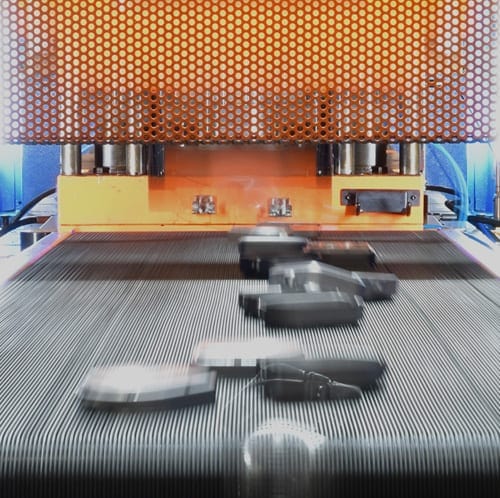High-Speed Pressings

The medical device industry is rightly defined by its insistence on precision, quality, and reliability. As the demand for advanced medical devices grows, manufacturers are always looking for new ways to improve. One such idea is the use of high-speed pressings, which offers significant advantages in the manufacture of medical device components.
The Importance of Speed and Precision
In the medical manufacturing industry, speed, accuracy, and safety are crucial elements. High-speed pressings are designed to meet these demands by providing rapid production capabilities without compromising on accuracy. This is particularly important for medical devices, where even the smallest deviation from spec can lead to significant issues in functionality and safety. High-speed pressings use advanced technology to achieve faster cycle times, allowing manufacturers to produce large volumes in a shorter period. This increased efficiency not only helps meet the growing market demand but also reduces production costs, making high-speed pressings an attractive option for manufacturers who want to stay competitive.
Advantages of High-Speed Pressings
One primary benefit of high-speed pressings is the ability to maintain consistency across large production runs. The precision offered by these presses ensures each component meets the exact specifications required. This is vital in ensuring the reliability and performance of the final products, which are often critical to patient health and safety. Another big plus is the reduction in production time. High-speed presses can operate at rates significantly higher than traditional presses, enabling manufacturers to increase output without sacrificing quality. This is particularly beneficial in the medical device industry, where time-to-market is a major factor. Moreover, high-speed pressings offer enhanced material efficiency. These presses are designed to minimise waste by optimising the use of raw materials. This not only reduces costs but also supports sustainability initiatives, which are increasingly important in today’s manufacturing landscape.
The precision and efficiency of high-speed pressings also play a role in enhancing the design of medical device components. By utilising advanced press technology, manufacturers can achieve intricate and complex designs that might be challenging with traditional methods. This allows for the creation of components with superior functionality and performance. Furthermore, high-speed pressings facilitate the production of components with tight tolerances and minimal variation. By ensuring each component is manufactured to exact specifications, high-speed pressings contribute to the reliability and efficacy of medical devices.
Quality Assurance and Compliance
In medicine, adherence to regulatory standards is non-negotiable. High-speed pressings support compliance with these stringent regulations by ensuring consistent quality and precision in every component. Additionally, high-speed pressings often incorporate advanced monitoring and control systems. These systems provide real-time data on the production process, allowing manufacturers to identify and address any issues immediately. This proactive approach to quality assurance helps maintain the integrity of the manufacturing process and ensures the final products meet all regulatory requirements.
Future Perspective
No one has a crystal ball but as technology continues to evolve, the already remarkable capabilities of high-speed pressings are expected to expand further. Innovation in press technology, such as the integration of artificial intelligence and machine learning, are set to enhance the precision and efficiency of these systems even more. These advances will surely lead to the development of new manufacturing techniques and materials, opening up new possibilities for the design and production of medical device components. The trend towards personalised medicine is likely to drive demand for customised components. High-speed pressings, with their ability to produce large volumes of precise components quickly, will play a key role in meeting this demand. The flexibility and scalability offered by these presses will enable manufacturers to adapt to the specific needs of individual patients, providing tailored solutions that improve patient outcomes.

High-speed pressings represent a significant advance in the manufacture of medical device components. By offering enhanced speed, precision, and efficiency, these presses are perfect for the stringent demands of the medical device industry. The ability to produce high-quality components consistently and cost-effectively makes high-speed pressing an invaluable tool for manufacturers. As technology continues to advance, the role of high-speed pressings in medical device manufacturing is set to become even more prominent. One thing is for sure – Clamason Industries will be at the forefront of any new developments.
